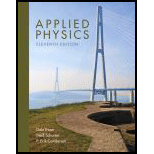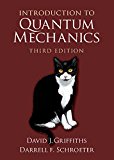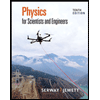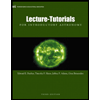
Applied Physics (11th Edition)
11th Edition
ISBN: 9780134159386
Author: Dale Ewen, Neill Schurter, Erik Gundersen
Publisher: PEARSON
expand_more
expand_more
format_list_bulleted
Concept explainers
Textbook Question
Chapter 13.2, Problem 5P
Find the mechanical advantage of a hydraulic press that produces a pressing force of 1320 N when the applied force is 55.0 N.
Expert Solution & Answer
Want to see the full answer?
Check out a sample textbook solution
Students have asked these similar questions
A hydraulic jack is capable of lifting 1,468 kg with an input force of 215 N. What is the amplification factor of the jack
A hydraulic lift raises a 2 000-kg automobile when a 500-N force is applied to the smaller piston. If the smaller piston has an area of 10 cm2, what is the cross-sectional area of the larger piston? Find: Area in square millimeters
A hydraulic jack is capable of lifting 1,043 kg with an input force of 296 N. What is the amplification factor of the jack [round your final answer to one decimal place]
Chapter 13 Solutions
Applied Physics (11th Edition)
Ch. 13.1 - Find the pressure (in lb/in2) at the bottom of a...Ch. 13.1 - Find the height of a column of water where the...Ch. 13.1 - Find the density of a liquid that exerts a...Ch. 13.1 - (a) Find the total force on the bottom of a...Ch. 13.1 - What must the water pressure be to supply water to...Ch. 13.1 - A small rectangular tank 5.00 in. by 9.00 in. is...Ch. 13.1 - Find the water pressure (in kPa) at the 25.0-m...Ch. 13.1 - Find the height of a column of water where the...Ch. 13.1 - What is the height of a column of water if the...Ch. 13.1 - What is the mass density of a liquid that exerts a...
Ch. 13.1 - What is the mass density of a liquid that exerts a...Ch. 13.1 - (a) Find the total force on the bottom of a...Ch. 13.1 - What must the water pressure be to supply the...Ch. 13.1 - Find the water pressure at ground level to supply...Ch. 13.1 - What pressure must a pump supply to pump water up...Ch. 13.1 - A submarine is submerged to a depth of 3550 m in...Ch. 13.1 - A filled water tower sits on the top of the...Ch. 13.1 - A filled water tower sits on the top of the...Ch. 13.1 - A filled water tower sits on the top of the...Ch. 13.1 - A filed water tower sits on the top of the highest...Ch. 13.1 - A filed water tower sits on the top of the highest...Ch. 13.1 - A cylindrical grain bin 24.0 ft in diameter is...Ch. 13.2 - The area of the small piston in a hydraulic jack...Ch. 13.2 - The mechanical advantage of a hydraulic press is...Ch. 13.2 - Find the mechanical advantage of a hydraulic press...Ch. 13.2 - The mechanical advantage of a hydraulic press is...Ch. 13.2 - Find the mechanical advantage of a hydraulic press...Ch. 13.2 - The small piston of a hydraulic press has an area...Ch. 13.2 - The MA of a hydraulic jack is 250. What force must...Ch. 13.2 - The small piston of a hydraulic press has an area...Ch. 13.2 - The MA of a hydraulic jack is 420. Find the weight...Ch. 13.2 - The mechanical advantage of a hydraulic jack is...Ch. 13.2 - The pistons of a hydraulic press have radii of...Ch. 13.2 - The small circular piston of a hydraulic press has...Ch. 13.2 - The large piston on a hydraulic lift has radius...Ch. 13.2 - In a hydraulic system a 20.0-N force is applied to...Ch. 13.2 - If the diameter of the larger piston in Problem 14...Ch. 13.2 - If a dentists chair weighs 1600 N and is raised by...Ch. 13.2 - A hydraulic jack whose piston has a...Ch. 13.2 - Compressed air in a car lift applies a force to a...Ch. 13.2 - The small piston of an automobile lift has an area...Ch. 13.2 - If the lifting force of a hydraulic truck jack is...Ch. 13.3 - Change 815 kPa to lb/in2.Ch. 13.3 - Change 64.3 lb/in2 to kPa.Ch. 13.3 - Change 42.5 lb/in2 to kPa.Ch. 13.3 - Change 215 kPa to lb/in2.Ch. 13.3 - Find the pressure of (a) 3 atm (in kPa), (b) 2 atm...Ch. 13.3 - A barometer in the Rocky Mountains reads 516 mm of...Ch. 13.3 - Find the absolute pressure in a bicycle tire with...Ch. 13.3 - Find the absolute pressure of a motorcycle tire...Ch. 13.3 - Find the gauge pressure of a tire with an absolute...Ch. 13.3 - Find the gauge pressure of a tire with an absolute...Ch. 13.3 - Find the absolute pressure of a tire gauge that...Ch. 13.3 - Find the absolute pressure of a tank whose gauge...Ch. 13.3 - Find the gauge pressure of a tank whose absolute...Ch. 13.3 - Find the gauge pressure of a tank whose absolute...Ch. 13.3 - Find the absolute pressure of a cycle tire with...Ch. 13.3 - Find the absolute pressure in a hydraulic jack...Ch. 13.4 - A metal alloy weighs 81.0 lb in air and 68.0 lb...Ch. 13.4 - A piece of metal weighs 67.0 N in air and 62.0 N...Ch. 13.4 - A rock weighs 25.7 N in air and 21.8 N in water....Ch. 13.4 - A metal bar weighs 455 N in air and 437 N in...Ch. 13.4 - A rock displaces 1.21 ft3 of water. What is the...Ch. 13.4 - A metal displaces 16.8 m3 of water. Find the...Ch. 13.4 - A metal casting displaces 327 cm3 of water. Find...Ch. 13.4 - A piece of metal displaces 657 cm3 of water. Find...Ch. 13.4 - A metal casting displaces 2.12 ft3 of alcohol....Ch. 13.4 - A metal cylinder displaces 515 cm3 of gasoline....Ch. 13.4 - A 75.0-kg rock lies at the bottom of a pond. Its...Ch. 13.4 - A 125-lb rock lies at the bottom of a pond. Its...Ch. 13.4 - A flat-bottom river barge is 30.0 ft wide, 85.0 ft...Ch. 13.4 - A flat-bottom river barge Is 12.0 m wide, 30.0 m...Ch. 13.4 - What is the volume (in m3) of the water displaced...Ch. 13.4 - A lifeguard swims with her head just above the...Ch. 13.4 - An underwater camera weighing 1250 N in air is...Ch. 13.5 - Water flows through a hose of diameter 3.90 cm at...Ch. 13.5 - Prob. 2PCh. 13.5 - Water flows from a pipe at 650 L/min. (a) What is...Ch. 13.5 - Water flaws through a pipe of diameter 8.00 cm at...Ch. 13.5 - A pump is rated to deliver 50.0 gal/min. Find the...Ch. 13.5 - Prob. 6PCh. 13.5 - What is the diameter of a pipe in which water...Ch. 13.5 - A garden hose is used to fill a bucket in 30.0 s....Ch. 13.5 - A liquid flows through a pipe with a diameter of...Ch. 13.5 - A pipe system with a radius of 0.060 m has a...Ch. 13 - The force applied to a unit area is called a....Ch. 13 - Prob. 2RQCh. 13 - For an incompressible fluid, the flow rate is a....Ch. 13 - Bernoullis principle states that for horizontal...Ch. 13 - Bernoulli's principle explains a. curving...Ch. 13 - What is the metric unit for pressure?Ch. 13 - In your own words, define pressure.Ch. 13 - In your own words, state how to find the force...Ch. 13 - In your own words, state the hydraulic principle.Ch. 13 - Describe why a ship floats.Ch. 13 - Describe how a rotating baseball follows a curved...Ch. 13 - How does an airplane wing provide lift?Ch. 13 - What is the difference between streamline and...Ch. 13 - Give an example of how Archimedes principle...Ch. 13 - Prob. 15RQCh. 13 - Is the pressure on a small piston different from...Ch. 13 - On what does the total force exerted by a liquid...Ch. 13 - Why must the thickness of a dam be greater at the...Ch. 13 - Is the hydraulic piston in the master brake...Ch. 13 - Prob. 20RQCh. 13 - Find the pressure (in kPa) at the bottom of a...Ch. 13 - Find the depth in a lake at which the pressure is...Ch. 13 - Find the height of a water column when the...Ch. 13 - What is the total force exerted on the bottom of a...Ch. 13 - Find the water pressure (in kPa) at a point 35.0 m...Ch. 13 - Find the total force on the bottom of a...Ch. 13 - Find the total force on the side of a cylindrical...Ch. 13 - Find the total force on the side of a rectangular...Ch. 13 - What must the water pressure (in kPa) be on the...Ch. 13 - What water pressure must a pump that is located on...Ch. 13 - A submarine is submerged to a depth of 3150 ft in...Ch. 13 - The area of the large piston in a hydraulic jack...Ch. 13 - The MA of a hydraulic jack is 324. What force must...Ch. 13 - The pistons of a hydraulic press have radii of...Ch. 13 - Find the absolute pressure in a bicycle tire with...Ch. 13 - Find the gauge pressure of a tire with an absolute...Ch. 13 - Find the gauge pressure of a tank whose absolute...Ch. 13 - A rock weighs 55.4 N in air and 52.1 N in water....Ch. 13 - A metal displaces 643 cm3 of water. Find the...Ch. 13 - A rock displaces 314 cm3 of alcohol. Find the...Ch. 13 - A flat-bottom barge is 22.3 ft wide, 87.5 ft long,...Ch. 13 - Water flows through a hose of diameter 3.00 cm at...Ch. 13 - Water flows through a 13.0-cm-diameter fire hose...Ch. 13 - An aquariums main tank holds 200,000 gal or 758 m3...Ch. 13 - The piston in a master cylinder has a radius of...Ch. 13 - A crane that can lift a maximum of 9000 N is...Ch. 13 - Wind tunnels are used to measure the aerodynamic...Ch. 13 - A flexible hose with inside radius 0.250 in. leads...
Additional Science Textbook Solutions
Find more solutions based on key concepts
9. A satellite in elliptical orbit about Earth travels fastest when it moves
(a) closest to Earth.
(b) farthest...
Conceptual Physical Science (6th Edition)
Verify than the direction of the line force in an MHD drive, such as that in Figure 22.32, does not depend on t...
College Physics
6.55 • A tandem (two-person) bicycle team must overcome a force of 165 N to maintain a speed of 9.00 m/s. Find ...
University Physics with Modern Physics (14th Edition)
22. A student has 65-cm-long arms. What is the minimum angular velocity (in rpm) for swinging a bucket of water...
Physics for Scientists and Engineers: A Strategic Approach with Modern Physics (4th Edition)
The potential energy of a mass on the surface of earth.
Physics (5th Edition)
Q3.13 Raindrops hitting the side windows of a car in motion often leave diagonal streaks even if there is no wi...
University Physics (14th Edition)
Knowledge Booster
Learn more about
Need a deep-dive on the concept behind this application? Look no further. Learn more about this topic, physics and related others by exploring similar questions and additional content below.Similar questions
- Find the force against a dam that is 18 meters deep and 69 meters long. The density of water is 1000 kg/m3.arrow_forwardthe hydraulic lift systemarrow_forwardThe small piston of a hydraulic press has an area of 85.0 cm 2. If the applied force is 1,750 N, what must the area of the large piston be to exert a pressing force of 15,200 N?arrow_forward
- Describe the principle and action of a hydraulic press giving a simple diagram.arrow_forwardA hydraulic jack receives a force of 100N and produces a force of 1kN to lift a certain load. Find theratio of the smaller area to the bigger area. please use 2 decimal places for your solution & final answerarrow_forwardHow much pressure is transmitted in hydraulic system that produces 492 N of force with a radius of .01m.arrow_forward
- The small piston of a hydraulic press has an area of 10.0 in2. If the applied force is 45.0 lb, what must the area of the large piston be to exert a pressing force of 3500 lb?arrow_forwardA press has a plunger of 4.5 cm diameter and ram of 30 cm diameter. Find the weight lifted by the hydraulic press when the force applied at the plunger is 500 N. (show solution and diagram)arrow_forwardThe hydraulic lift has a large cross section and a small cross section. Large crosssectional area is 25 times the small cross-sectional area. If on the small cross section is given an input force of 50 N, then determine the output force.arrow_forward
- A hydraulic jack receives a force of 100N and produces a force of 1kN to lift a certain load. Find the ratio of the smaller area to the bigger area.arrow_forwardA hydraulic car lift uses a small piston with a cross-sectional area of 2.50 cm2and a large piston with a cross-sectional area of 300 cm2. Calculate the force applied on the small piston so that it can support a weight of 12,500 N.arrow_forwardOil (SG = 0.93) is pumped from a well. If the pump is 11.7 ft above the surface of the oil, what pressure must the pump be able to generate to lift the oil up to the pump?arrow_forward
arrow_back_ios
SEE MORE QUESTIONS
arrow_forward_ios
Recommended textbooks for you
 College PhysicsPhysicsISBN:9781305952300Author:Raymond A. Serway, Chris VuillePublisher:Cengage Learning
College PhysicsPhysicsISBN:9781305952300Author:Raymond A. Serway, Chris VuillePublisher:Cengage Learning University Physics (14th Edition)PhysicsISBN:9780133969290Author:Hugh D. Young, Roger A. FreedmanPublisher:PEARSON
University Physics (14th Edition)PhysicsISBN:9780133969290Author:Hugh D. Young, Roger A. FreedmanPublisher:PEARSON Introduction To Quantum MechanicsPhysicsISBN:9781107189638Author:Griffiths, David J., Schroeter, Darrell F.Publisher:Cambridge University Press
Introduction To Quantum MechanicsPhysicsISBN:9781107189638Author:Griffiths, David J., Schroeter, Darrell F.Publisher:Cambridge University Press Physics for Scientists and EngineersPhysicsISBN:9781337553278Author:Raymond A. Serway, John W. JewettPublisher:Cengage Learning
Physics for Scientists and EngineersPhysicsISBN:9781337553278Author:Raymond A. Serway, John W. JewettPublisher:Cengage Learning Lecture- Tutorials for Introductory AstronomyPhysicsISBN:9780321820464Author:Edward E. Prather, Tim P. Slater, Jeff P. Adams, Gina BrissendenPublisher:Addison-Wesley
Lecture- Tutorials for Introductory AstronomyPhysicsISBN:9780321820464Author:Edward E. Prather, Tim P. Slater, Jeff P. Adams, Gina BrissendenPublisher:Addison-Wesley College Physics: A Strategic Approach (4th Editio...PhysicsISBN:9780134609034Author:Randall D. Knight (Professor Emeritus), Brian Jones, Stuart FieldPublisher:PEARSON
College Physics: A Strategic Approach (4th Editio...PhysicsISBN:9780134609034Author:Randall D. Knight (Professor Emeritus), Brian Jones, Stuart FieldPublisher:PEARSON

College Physics
Physics
ISBN:9781305952300
Author:Raymond A. Serway, Chris Vuille
Publisher:Cengage Learning

University Physics (14th Edition)
Physics
ISBN:9780133969290
Author:Hugh D. Young, Roger A. Freedman
Publisher:PEARSON

Introduction To Quantum Mechanics
Physics
ISBN:9781107189638
Author:Griffiths, David J., Schroeter, Darrell F.
Publisher:Cambridge University Press

Physics for Scientists and Engineers
Physics
ISBN:9781337553278
Author:Raymond A. Serway, John W. Jewett
Publisher:Cengage Learning

Lecture- Tutorials for Introductory Astronomy
Physics
ISBN:9780321820464
Author:Edward E. Prather, Tim P. Slater, Jeff P. Adams, Gina Brissenden
Publisher:Addison-Wesley

College Physics: A Strategic Approach (4th Editio...
Physics
ISBN:9780134609034
Author:Randall D. Knight (Professor Emeritus), Brian Jones, Stuart Field
Publisher:PEARSON
Fluids in Motion: Crash Course Physics #15; Author: Crash Course;https://www.youtube.com/watch?v=fJefjG3xhW0;License: Standard YouTube License, CC-BY